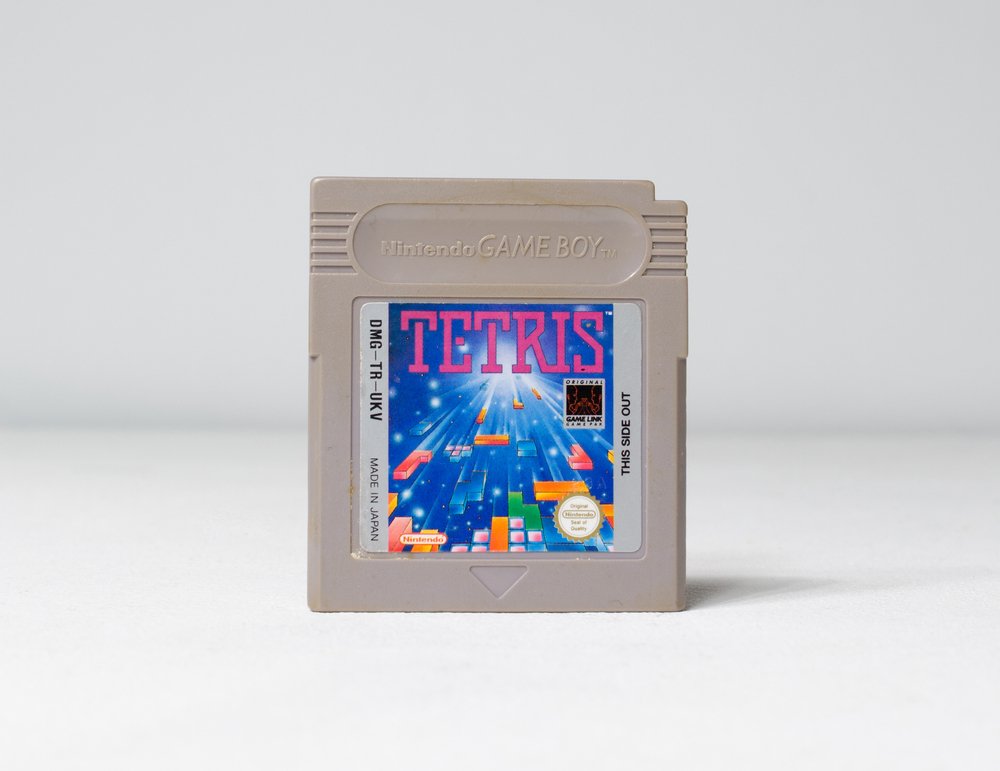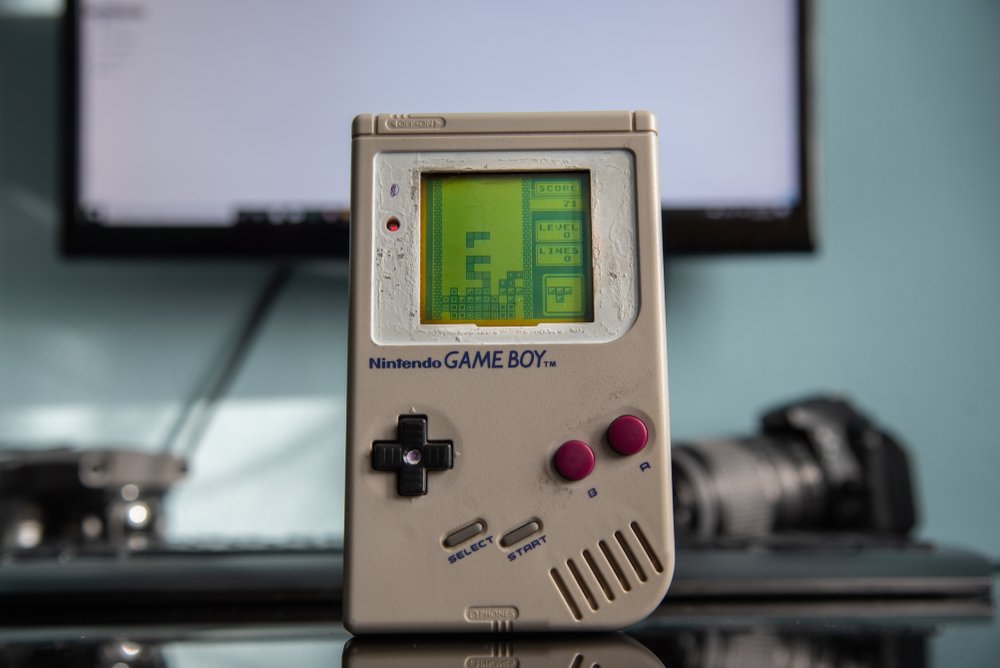Last Updated on January 7, 2024 by Gamesver Team and JC Franco

Tetris is a game that most of us have played or heard about. From its origin in the ’80s to this day, it remains a popular game among young and old. Unbeknown to us at the time, the game presented us with a new perspective and did great things for cognitive development. That said, you wonder what kind of perspective a single-pager game like Tetris can offer. The answer is that there’s a history buried in the game that teaches us the importance of balance and timing.
Pajitnov, the game’s original coder, could never have imagined that his game would have such a place in history. Tetris is addictive, we all know that, but there’s more to know about the game than that simple fact. Let’s delve into 45+ facts about the game of Tetris.
45+ facts that every Tetris fan must know:
1. Tetris has several Guinness World Records to its name.
The game got its name in Guinness World Records. First for being one of the top-selling video games in history. Second for being the most ported video game ever. And lastly, because it became the first-ever video game played.
2. Tetris has been featured in many scientific papers and studies.
Tetris and psychology have a long history together. Many psychologists and visual psychology experts used Tetris in their research. Each of the findings is quite interesting, one of which claims that Tetris can effectively stave off food cravings.
3. Tetris has sports connections, from tennis to the Paralympics.
The designer of the game, Alexey Pajitnov, was a tennis enthusiast, so he wanted to name the game something aligning with tennis. So he took the Latin word “Tetra,” which means four. He merged ‘Tetra’ with his favorite sport; Tennis. That’s how the name ‘Tetris’ came about.
Tetris had another significant encounter with the world of sports when it made an appearance in the closing ceremony 2014 Paralympics, Sochi. Tetris pieces displayed a message saying, “I’m possible” on the stadium’s giant screen.
4. The theme song of Tetris was first a love song.
The much-talked-about theme song of Tetris was initially a Russian folk song.
5. Playing Tetris can sharpen your cognitive responses, a reputed journal published in its study.
The Mind Research Network’s researchers used brain imaging techniques to establish a relation between the brain’s efficiency and Tetris. They used randomized trials to prove their claim that playing Tetris improves the brain’s efficiency.
6. Tetris is the first game that a human played in space.
Tetris was the first game to leave the earth and reach space. In 1993, Russian cosmonaut Aleksandr Serebrov took his Game Boy with him along with a Tetris cartridge on his space trip!
7. Tetris was featured as an artwork at the Museum of Modern Art.
Museum Of Modern Art, New York, created a particular category of artwork in 2012. They acquired the print rights of 14 rare games from across the world. Tetris was one of them. The likes of Pacman, Portal, and Myst appeared in the same collection.
8. Russian officials sealed floppy versions of the game because of its addictive nature.
It is said that Russian officials locked all the floppy versions of Tetris after they found out that Pajitnov had created a game that was addictive.
9. The syndrome named after the game is called Tetris Effect.
The Tetris Effect triggers when people spend too much time at an activity. It starts to affect their thoughts, dreams, and mental images. The terminology comes from Tetris, the game.
10. Tetris was once the focus of a Harvard Professor.
A Harvard Professor, Stickgold, once conducted a study on Tetris Syndrome to establish its efficacy.
11. Tetris Effect can present in the form of a temptation.
The temptation to stack up objects in a supermarket is Tetris Effect in action.
12. The game’s creator was not fairly rewarded.
Pajitnov, the game’s coder, did not receive any royalties for the game in the first decade of its release.
13. Tetris was about endless loops of disappointment.
Nobody could entirely win the game in the original version of Tetris, as it was designed to run on an endless loop.
14. The USA imported Tetris.
Tetris was the first-ever game that the USA imported from the Soviet Union.
15. Automotive giant General Motors used Tetris’s music to promote the Chevrolet Traverse.
In 2013, when American Vehicle manufacturer launched Chevrolet Traverse, it used Tetris in its branding campaign. The campaign used its theme song and the iconic Tetris pieces to promote the car.
16. Nintendo’s Game Boy popularity was attributed to Tetris.
After the commercial launch of Tetris on Game Boy, it made about 35 million sales.

17. Cash was once a prize for winning.
Sega-produced Mega Drive Tetris had real cash prizes.
18. The “boss button”.
The Tetris version with the “boss button” opened with a spreadsheet image. The intention was to give the second person an impression of the other player’s progress.
19. Robert Maxwell wanted the game rights.
Maxwell once set up a meeting with Soviet Union President Mikhail Gorbachev and proposed to buy all the rights to the game.
20. Tetris is a universal game.
Tetris has become a timeless global video game.
21. The designers once added an element of excitement for fans.
One of the Tetris designers, Frank Lee, once hosted an event on a 437 ft building and invited several fans to play Tetris along with him.
22. Tiny Tetris was an option.
Tetris’s most miniature version required an electron microscope to play it.
23. Tetris can break bad habits.
A study conducted by the University of Plymouth claimed Tetris helps people quit smoking.
24. The logo has an unexpected link.
The legendary cover artist Roger Dean was the man behind Tetris’s original logo.
25. An entire thesis on Tetris exists.
A Mathematician named J. Brzustowski published a thesis on Tetris and called it Tetris Thesis. He tried to establish that it’s impossible to play Tetris forever.
26. The game has unusual or unexpected coding.
Pajitnov coded the game on Electronika 60, which could not even display images.
27. The Soft Drop feature came later.
Tetris added the Soft Drop feature to the game after five years of its commercial launch.
28. Some people became addicts.
Sir Patrick Stewart told Entertainment Weekly that he was a Tetris addict.
29. The Simpsons series loves Tetris.
“The Simpsons” has multiple Tetris references.
30. There’s a Tetris documentary.
There is a documentary film on Tetris players called “Ecstasy of the Order: The Tetris Masters.”
31. Tetris became BP Software property.
Rogers, the CEO of BP Software, was the person who brought Tetris to Nintendo’s platform.
32. Nintendo wasn’t an immediate Tetris fan.
Nintendo initially didn’t want Tetris, but Rogers’s persuasion changed their minds.
33. The intention of Tetris is different from what you may think.
Pajtinov’s one of the primary motives behind coding Tetris was to make computers less intimidating to the general masses.
34. Bonus games were to beat boredom.
Rogers loved the game, but he believed the game could start to bore people after some time. That’s why he pushed Pajitnov to add bonuses to the game.
35. Tetris is great for stress.
In her study, Dr. Emily from Oxford University stated that Tetris could help fight stress disorders.
36. You can lose weight with Tetris’s help.
One of the psychologists from the University of Plymouth found Tetris can help people reduce weight in his experiment.
37. The theme song is Russian.
The Korobeiniki, the original theme song of Tetris, is a 19th-century Russian folk song.
38. The game creator had other successes too.
Tetris is not the only game that Pajitnov successfully coded. One of his games, “Hexic,” was also well known.
39. Tetris stars in several shows.
The likes of Family Guy, Muppet Babies, and Futurama also have Tetris references.
40. Tetris was once featured on Jeopardy.
The reality show Jeopardy was in the limelight because some of its contestants cited wrong Tetris facts.

41. The game’s fame didn’t please everyone.
Pajitnov’s peers in Soviet Academy were not happy with the commercialization of the game.
42. The game rights were shaky at first.
When Pajitnov coded the game, intellectual property rights did not actually exist in the Soviet Union.
43. The game rights were transferred unusually.
Pajitnov transferred the rights of the game to the Soviet Academy in a non-compulsory remuneration deal.
44. The first floppy went to an unexpected country.
The first exported floppy of Tetris went to Hungary.
45. The creator of the game wasn’t initially focused on games.
Pajitnov entered the Soviet Academy of Sciences as a speech recognition expert.
46. Tetris made people and computers become “friends.”
Pajitnov’s driving force behind coding Tetris was to help people connect with their computers with ease.
Last Word
That’s a lot of facts to enjoy in one go! Hopefully, you learned something new! Best of luck with your future Tetris playing endeavors!

